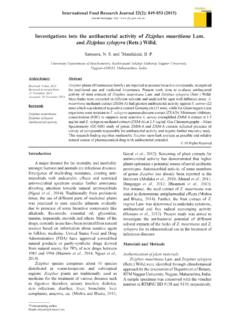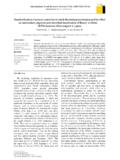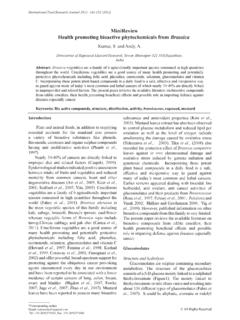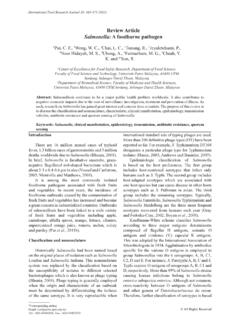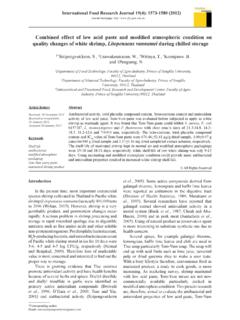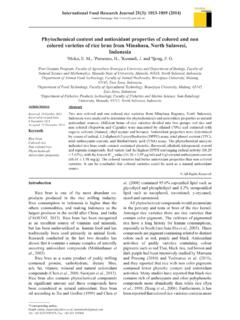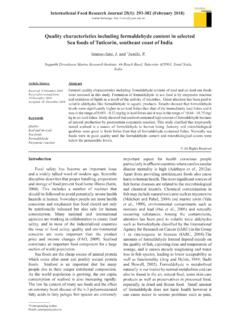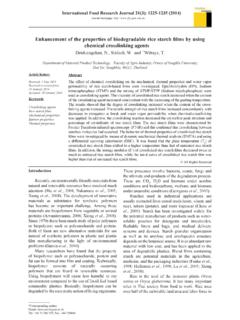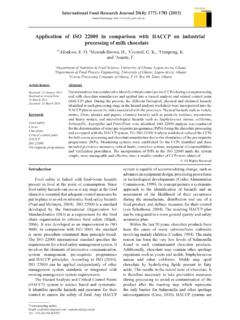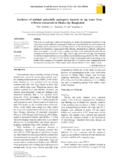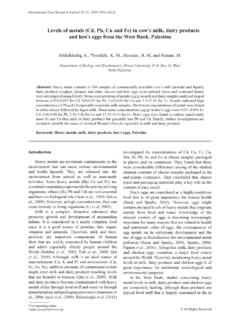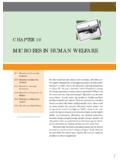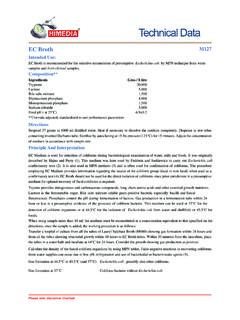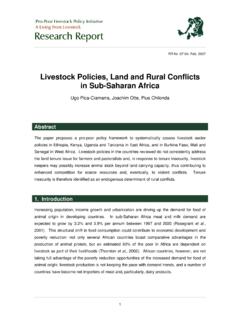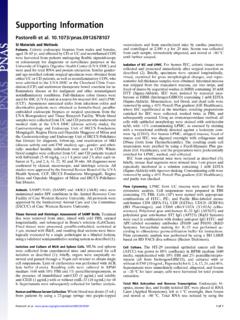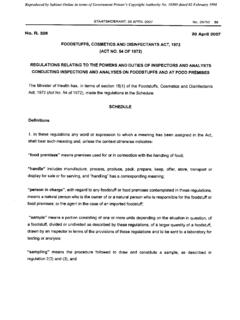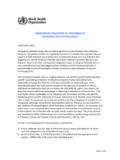Transcription of Proximate analysis, mineral content and antioxidant ...
1 All Rights Reserved*Corresponding author. Email: International Food Research Journal 20(2): 673-679 (2013)Journal homepage: , A. S. L. and *Rabeta, M. Technology Division, School of Industrial Technology, University Science Malaysia, 11800 Minden, Penang, MalaysiaProximate analysis, mineral content and antioxidant capacity of milk apple, malay apple and water appleAbstractThe aim of this study is to determine the antioxidant capacity of underutilized fruits in Malaysia namely Milk apple (Syzygium malaccense), Malay apple (Syzygium malaccense (L.) Merr. and Perry), and Water apple (Syzygium aqueum). Synthetic antioxidants (BHA and BHT) commonly used in the food industries may not be as safe as it was presumed earlier.
2 As BHA and BHT may be carcinogenic, it is important to look for new sources of natural antioxidants from fruits and vegetables. Freeze dried samples extracted with acetone and water were measured by ferric 1, 1-diphenyl-2-picrylhydrazyl (DPPH) radical scavenging and Ferric Reducing antioxidant Power (FRAP) assays. Acetone extract (50%) showed higher values for both DPPH and FRAP assays compared with water extract. Milk apple has the highest DPPH value of inhibition of DPPH. Milk apple also showed the highest FRAP value with M of Fe (II) per gram of freeze dried sample. There was a significant difference (P < ) in the types of extraction used.
3 antioxidant capacities of the samples are in the following order: Milk apple > Malay apple > Water apple. Proximate compositions and mineral contents of the samples were determined too. The samples can be used as a source of natural fruits of Milk apple (Syzygium malaccense), Malay apple (Syzygium malaccense (L.) Merr. and Perry), and Water apple (Syzygium aqueum) were the selected samples of natural antioxidant to be used in this experiment to assess the antioxidant activity of the fruits. All of these fruits were freshly harvested from Kuala Kurau, Perak, the years, consumers have been paying more and more attention to the health and nutritional aspect of horticultural products.
4 Having a diet rich in fruits and vegetables will be able to provide some protection against the common diseases such as cardiovascular diseases, cancers and other age-related degenerative diseases (Scalzo et al., 2005). Evidence shows that free radicals are responsible for the damage of lipids, proteins, and nucleic acid in cells could lead to these common diseases (Alothman et al., 2009a). Recent studies showed that frequent consumption of fruits and vegetables can reduce the risk of stroke and cancer which is related to the antioxidant microconstituents contained on the plant parts. Different fruits will exhibit different capacities due to the presence of different dietary antioxidants, such as vitamin C and E, carotenoids, flavanoids, and other phenolic compounds (Saura-Calixto and Goni, 2006).
5 Malaysian population generally consume a lot of tropical and sub tropical fruits in their daily diet that are reported to be high in antioxidant components with strong potential scavenging activities. These tropical fruits are well known with their therapeutic properties and they contain high antioxidants and contribute health benefits to those eating them (Alothman et al., 2009a). However, there are some underutilized fruits that grow abundantly in the region of Peninsular Malaysia, Sabah and Sarawak which may have potential benefits towards human health (Ikram et al., 2009). Most of these fruits are still growing in the wild or in a semi cultivated state.
6 Reasons why these fruits are classified as underutilized are due to the lack of promotion, minimal planting area, and having an economic potential that has not been fully explored (Shakirin et al., 2010).Butylated hydroxyanisole (BHA, 3-tert-butyl-4-hydroxyanisole) with the E number E320 and butylated hydroxytoluene (BHT, 3,5-di-tert-butyl-4-hydroxytoluene) with the E number E321 are the common synthetic antioxidants used in the food KeywordsAntioxidant capacityDPPHFRAP acetoneunderutilized fruitsArticle historyReceived: 24 April 2012 Received in revised form: 26 July 2012 Accepted: 30 July 2012674 Lim, A. S. L. and Rabeta, M.
7 20(2): 673-679industries for human consumption (Conacher et al., 1986). They are commonly added into food products such as vegetable oils and snacks to extend their shelf life and prevent damages due to oxidative damages (Leclercq et al., 2000).However, further studies on BHA and BHT showed that these compounds, besides their inhibitory influence upon carcinogenesis, may not be as safe as it was presumed earlier. These synthetic antioxidants may not be rendered completely harmless as BHA promotes the action of some carcinogens while BHT may cause lung damage. Both BHA and BHT were revealed potentially to enhance or even initiate neoplastic process (Hocman, 1988).
8 Since synthetic antioxidants such as BHA and BHT can be carcinogenic, it is important to find new sources of natural antioxidants especially in fruits and vegetables (Shakirin et al., 2010). The replacement of synthetic antioxidants by natural sources may play a role in maintaining health and have benefits for emulsions in food system (Moure et al., 2001). Therefore, probably it would be possible to discover more sources of natural antioxidants with the work done on these fruits. The main objective of this study is to evaluate the antioxidant capacity of the fruits, namely using 2,2-diphenyl-1-picrylhydrazyl free radical (DPPH) scavenging assay and Ferric Reducing antioxidant Power Assay (FRAP) method of Milk apple, Malay apple, and Water apple.
9 Materials and MethodsChemicalsChemicals such as acetone, methanol, hydrochloric acid, ferric chloride, ferrous sulphate, sodium acetate, and acetic acid were obtained from R and M Chemicals (Essex, UK). On the other hand, 1, 1-diphenyl-2-picrylhydrazyl (DPPH) was obtained from Fluka (Switzerland) while 2,4,6-tri(2-pyridyl)-l,3,5-triazine (TPTZ) was obtained from Sigma-Aldrich (St. Louis, MO, USA). All the chemicals used were of analytical grade. Sample preparationFreshly obtained Milk apple, Malay apple, and Water apple were separated from its stem and its leaves removed. They were then washed with running water.
10 The fruits were separated into two groups where the first group were blended and the second group were freeze-dried using freeze drier (Alpha 1-2LD Plus, Germany). For blending, the samples were diced into small cubes and blended in a normal grinder (Panasonic MX-7995) for 5 min. These blended samples were then kept in plastic container and refrigerated at 16oC. These fresh samples were not kept for more than 1 week. As for freeze-dried samples , the samples were freeze dried initially and then blended in a normal grinder until they were fine. These samples were then sealed in a plastic bag and kept in and dark, air-tight steel can.
